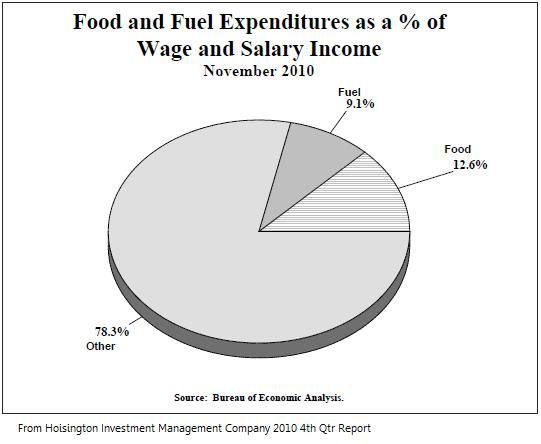
According the the Fourth Quarter 2010 Hoisington Managements Report, November 2010 consumer fuel expenditures amounted to 9.1% of wage and salary income and consumer food expenditures were 12.6% of wage and salary income for a family with a median income of $50,000. Annual fuel expenditures rose by about $660 for the typical family and Hoisington estimates that food costs increased $626.
The report states:
These increased costs could be considered inflationary, however, with wage income stagnant, higher food and fuel prices will act like a tax increase. Indeed, the approximately $1300 increase in food and fuel prices is equal to 2.6% of median family income, an amount that more than offsets the 2% reduction in the social security tax for 2011.Thus, the total spending for food* and fuel for the typical U.S. household in November 2010 was 21.7%. But, since November, gasoline prices have risen 23% and food prices are also up more than 1%, so this pie graph, were it up-to-date, would be looking worse for the U.S. household.
Hoisington explains why Fed policy is contributing to this decreased standard of living for Americans. In addition, as the dollar's value decreases, oil costs increase. Also important, is that as globalization's dynamics play out, there are economic winners and losers.
Stagnant wages, high unemployment, and higher food and fuel expenses are why some now say that Walmart's new enemy is the dollar store.
K. McDonald
*13.1% of the population is currently on food stamps.
Note that the average Canadian household spends about 17 per cent of its income on food, but that is expected to reach 20% soon.